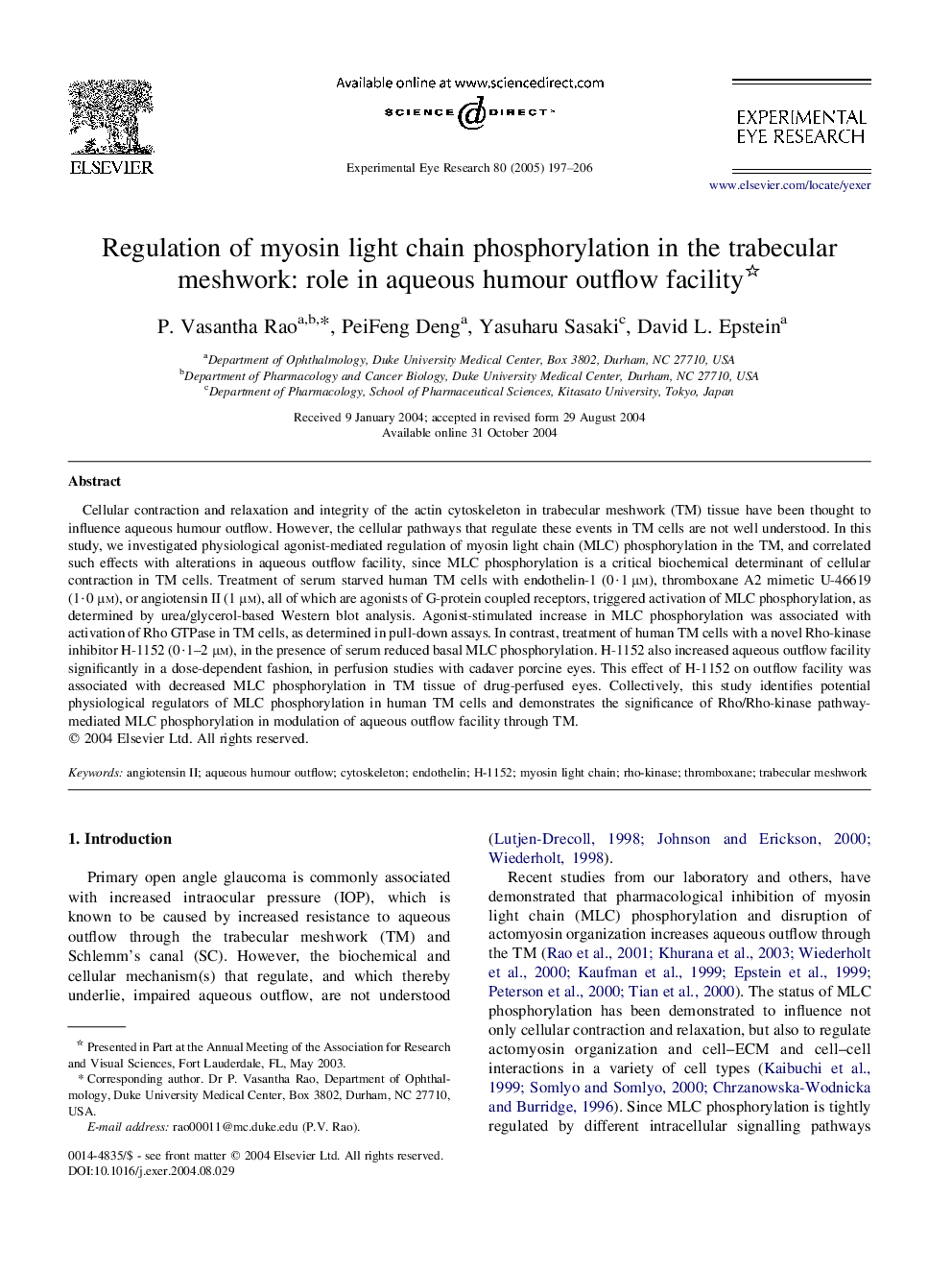| Article ID | Journal | Published Year | Pages | File Type |
|---|---|---|---|---|
| 9342052 | Experimental Eye Research | 2005 | 10 Pages |
Abstract
Cellular contraction and relaxation and integrity of the actin cytoskeleton in trabecular meshwork (TM) tissue have been thought to influence aqueous humour outflow. However, the cellular pathways that regulate these events in TM cells are not well understood. In this study, we investigated physiological agonist-mediated regulation of myosin light chain (MLC) phosphorylation in the TM, and correlated such effects with alterations in aqueous outflow facility, since MLC phosphorylation is a critical biochemical determinant of cellular contraction in TM cells. Treatment of serum starved human TM cells with endothelin-1 (0·1 μm), thromboxane A2 mimetic U-46619 (1·0 μm), or angiotensin II (1 μm), all of which are agonists of G-protein coupled receptors, triggered activation of MLC phosphorylation, as determined by urea/glycerol-based Western blot analysis. Agonist-stimulated increase in MLC phosphorylation was associated with activation of Rho GTPase in TM cells, as determined in pull-down assays. In contrast, treatment of human TM cells with a novel Rho-kinase inhibitor H-1152 (0·1-2 μm), in the presence of serum reduced basal MLC phosphorylation. H-1152 also increased aqueous outflow facility significantly in a dose-dependent fashion, in perfusion studies with cadaver porcine eyes. This effect of H-1152 on outflow facility was associated with decreased MLC phosphorylation in TM tissue of drug-perfused eyes. Collectively, this study identifies potential physiological regulators of MLC phosphorylation in human TM cells and demonstrates the significance of Rho/Rho-kinase pathway-mediated MLC phosphorylation in modulation of aqueous outflow facility through TM.
Keywords
Related Topics
Life Sciences
Immunology and Microbiology
Immunology and Microbiology (General)
Authors
P. Vasantha Rao, PeiFeng Deng, Yasuharu Sasaki, David L. Epstein,
